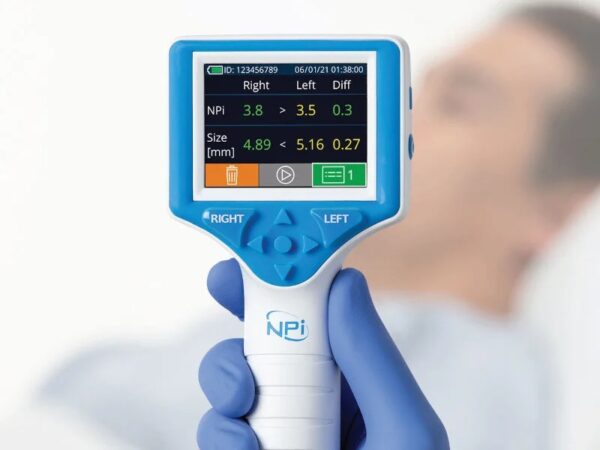
In neurology, it is imperative to have reliable and efficient assessment measures for diagnosing and treating neurological disorders. One such groundbreaking tool is the NPi Pupillometer which has greatly expanded the capabilities for evaluating the pupils. The NPi Pupillometer has changed the process of neuro exams by providing accurate measurements and consistent results. This article mainly focuses on the NPi Pupillometer and its effects on neurological assessments, the advantages of the device, and its use in medical practice.
Importance of Pupillary Evaluation in Neurology
Assessment of the pupils is a very important part of neurological physical examination. Alterations in pupil size and their responsiveness may point to a number of neurological disorders, such as TBI, CVA, and elevated ICP. In the past, the analysis was performed based on purely the clinician’s visual judgments are often subjective, imprecise, and vary from one clinician to another. The NPi Pupillometer can overcome these issues by delivering clear and accurate data.
How the NPi Pupillometer Works?
The NPi Pupillometer employs infrared photo capture technology to obtain pictures of the pupil and its reaction to a particular light source. The device records characteristics like initial pupil size, rate of constriction, rate of dilation, and latency. These measurements are then used to calculate the neurological pupil index that goes up to 5. Also, if an NPi is found to be either significantly high or low, it may suggest neurological problems, thus warranting further examination.
Benefits of the NPi Pupillometer in Neurological Assessments
1. Early Detection of Neurological Changes
The features of the NPi Pupillometer provide an accurate measurement that can help in the early identification of even the slight changes in the pupillary function that can be a pointer to a developing neurological complication. It is well established that early intervention leads to better outcomes in patients; thus, this tool is extremely useful in the ICU.
2. Enhanced Monitoring in Critical Care
The precise measurements offered by the NPi Pupillometer allow for the early detection of subtle changes in pupillary function that may indicate emerging neurological issues. The NPi Pupillometer helps to perform numerous and accurate measurements so that the changes in the patient’s state can be observed and addressed on time. This capability is more relevant for head injury patients or any patient going through brain surgery.
3. Objectivity and Consistency
One of the main drawbacks of most related methods is the subjectivity of the assessment in terms of the pupillary signs, which the NPi Pupillometer successfully eliminates. It helps clinicians avoid biased evaluation by providing objective evidence that may not be skewed by the clinician or clinical setting. This standardization is very important, particularly in ensuring proper diagnosis and follow-up of neurological disorders.
4. Educational Value
The application of the NPi Pupillometer in educational settings assists in preparing future professionals in neurological areas to understand the significance of objective neurological assessments. When this particular tool is included in the training curriculum, medical students and common people will be able to gain more understanding of the role of pupillary evaluations in the practice.
Application of the NPi Pupillometer in Clinical Settings
1. Traumatic Brain Injury (TBI) Assessment
The assessment of the pupillary function should be as early and accurate as possible, especially concerning a TBI patient. The NPi Pupillometer assists in diagnosing variations in the intracranial pressure as well as other neurological abnormalities and hence, facilitates management.
2. Stroke Management
Pupillary assessments are important for stroke patients because they can provide essential data about brain status and blood circulation. Making use of the NPi Pupillometer, the results are credible and can be useful in the management and treatment of the patient.
3. Neurosurgery
Neurological status always needs to be closely observed during and after neurosurgical interventions. The NPi Pupillometer is one of the best invasive-free neurological tools to monitor the patient’s brain function and to detect any issues at an early stage.
4. Critical Care Units
In the critical care context, the NPi Pupillometer is an indispensable device for assessing the patient’s neurological status regularly. Since it provides reliable and impartial data, good patient management results are achievable, which would improve care quality.
Conclusion
The NPi Pupillometer has therefore brought a significant change in neuro exam by giving accurate, reproducible, and consistent measures of pupillary function. That feature to calculate the Neurological Pupil Index can provide clinicians with a useful tool for the early identification of neurological disorders. Incorporation of the NPi Pupillometer into clinical practice will help to improve the neuro exams and therefore the patient’s condition and the neurology field in general.